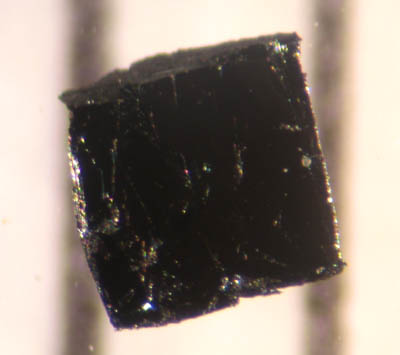|
Alexei Tsvelik
Alexei Mikhaylovich Tsvelik () is a theoretical condensed matter physicist working on strongly correlated electron systems. He is widely recognised for his pioneering contributions to the theory of low-dimensional systems, including applications of non-perturbative quantum field theory methods and the Bethe Ansatz. Education and Career He graduated from the Moscow Physical Technical Institute in 1977, before gaining his PhD in Theoretical Physics in 1980 from the Kurchatov Institute for Atomic Energy. Between 1982 and 1989 he worked at the Landau Institute for Theoretical Physics. After visiting positions at Harvard, Princeton and the University of Florida, Tsvelik was appointed as a Lecturer, and subsequently Professor, at the University of Oxford (where he was affiliated to Brasenose College). In 2001 he was appointed as a Senior Physicist and Group Leader at Brookhaven National Laboratory. He has also served as an adjunct professor of physics at Stony Brook University. Rese ... [...More Info...] [...Related Items...] OR: [Wikipedia] [Google] [Baidu] |
Samara
Samara, formerly known as Kuybyshev (1935–1991), is the largest city and administrative centre of Samara Oblast in Russia. The city is located at the confluence of the Volga and the Samara (Volga), Samara rivers, with a population of over 1.14 million residents, up to 1.22 million residents in the urban agglomeration, not including Novokuybyshevsk, which is not conurbated. The city covers an area of , and is the List of cities and towns in Russia by population, eighth-largest city in Russia and tenth agglomeration, the Volga#Biggest cities on the shores of the Volga, third-most populous city on the Volga, as well as the Volga Federal District. Formerly a closed city, Samara is now a large and important social, political, economic, industrial, and cultural centre in Russia and hosted the European Union—Russia Summit in May 2007. It has a continental climate characterised by hot summers and cold winters. The life of Samara's citizens has always been intrinsically linked to the V ... [...More Info...] [...Related Items...] OR: [Wikipedia] [Google] [Baidu] |
University Of Oxford
The University of Oxford is a collegiate university, collegiate research university in Oxford, England. There is evidence of teaching as early as 1096, making it the oldest university in the English-speaking world and the List of oldest universities in continuous operation, second-oldest continuously operating university globally. It expanded rapidly from 1167, when Henry II of England, Henry II prohibited English students from attending the University of Paris. When disputes erupted between students and the Oxford townspeople, some Oxford academics fled northeast to Cambridge, where they established the University of Cambridge in 1209. The two English Ancient university, ancient universities share many common features and are jointly referred to as ''Oxbridge''. The University of Oxford comprises 43 constituent colleges, consisting of 36 Colleges of the University of Oxford, semi-autonomous colleges, four permanent private halls and three societies (colleges that are depar ... [...More Info...] [...Related Items...] OR: [Wikipedia] [Google] [Baidu] |
Piers Coleman
Piers Coleman (born 1958) is a British-born theoretical physicist, working in the field of theoretical condensed matter physics. Coleman is professor of physics at Rutgers University in New Jersey and at Royal Holloway, University of London. Education and career Coleman was raised in Cheltenham, England, where he attended Cheltenham Grammar School, graduating in 1976. He completed his undergraduate education at Trinity College, Cambridge, pursuing the Natural Sciences Tripos and the Mathematics Tripos part III under the mentorship of Gilbert Lonzarich. In 1980 he won a Jane Eliza Procter Fellowship to Princeton University where he studied theoretical condensed matter physics with Philip Warren Anderson. Contemporaries in the Princeton graduate physics program included Gabriel Kotliar, Cumrun Vafa, Nathan Mhyrvold and Jennifer Chayes. He was awarded a Junior Research Fellowship at Trinity College, Cambridge, which he held from 1983 to 1988. He was a postdoctoral fello ... [...More Info...] [...Related Items...] OR: [Wikipedia] [Google] [Baidu] |
High-temperature Superconductivity
High-temperature superconductivity (high-c or HTS) is superconductivity in materials with a critical temperature (the temperature below which the material behaves as a superconductor) above , the boiling point of liquid nitrogen. They are "high-temperature" only relative to previously known superconductors, which function only closer to absolute zero. The first high-temperature superconductor was discovered in 1986 by IBM researchers Georg Bednorz and K. Alex Müller. Although the critical temperature is around , this material was modified by Ching-Wu Chu to make the first high-temperature superconductor with critical temperature . Bednorz and Müller were awarded the Nobel Prize in Physics in 1987 "for their important break-through in the discovery of superconductivity in ceramic materials". Most high-c materials are type-II superconductors. The major advantage of high-temperature superconductors is that they can be cooled using liquid nitrogen, in contrast to previously known s ... [...More Info...] [...Related Items...] OR: [Wikipedia] [Google] [Baidu] |
Quantum Heisenberg Model
The quantum Heisenberg model, developed by Werner Heisenberg, is a statistical mechanical model used in the study of critical points and phase transitions of magnetic systems, in which the spins of the magnetic systems are treated quantum mechanically. It is related to the prototypical Ising model, where at each site of a lattice, a spin \sigma_i \in \ represents a microscopic magnetic dipole to which the magnetic moment is either up or down. Except the coupling between magnetic dipole moments, there is also a multipolar version of Heisenberg model called the multipolar exchange interaction. Overview For quantum mechanical reasons (see exchange interaction or ), the dominant coupling between two dipoles may cause nearest-neighbors to have lowest energy when they are ''aligned''. Under this assumption (so that magnetic interactions only occur between adjacent dipoles) and on a 1-dimensional periodic lattice, the Hamiltonian can be written in the form :\hat H = -J \sum_^ \sigm ... [...More Info...] [...Related Items...] OR: [Wikipedia] [Google] [Baidu] |


